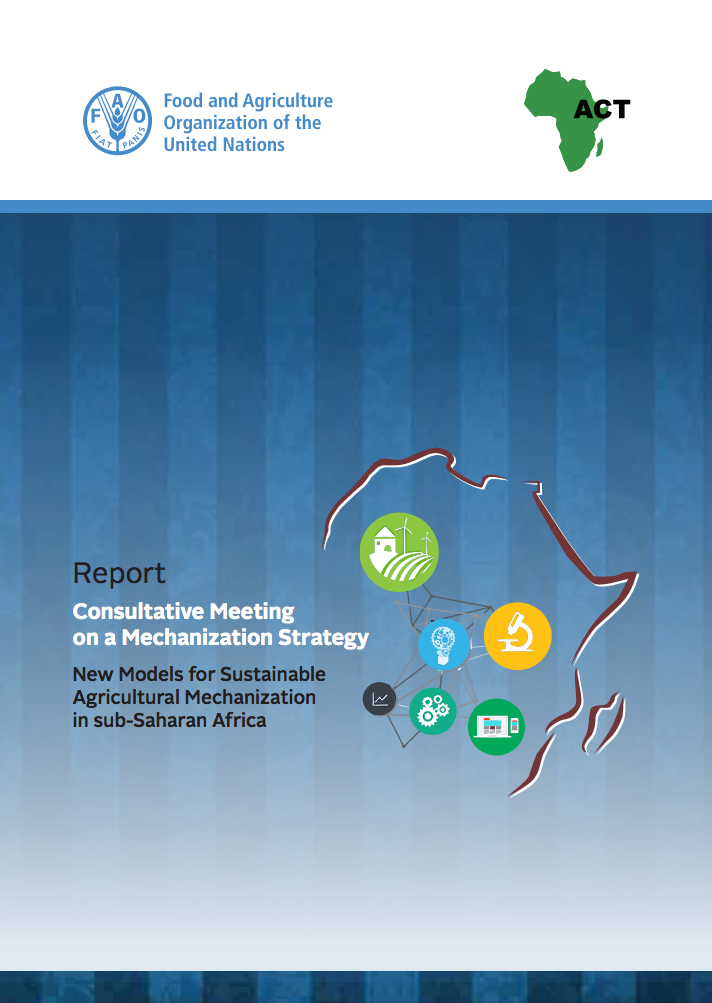This document provides information on implementation of VGGT and a number of checklists that might be helpful for investors and companies on the following topics: Tenure Rights Risk Management Checklist (II.B), Consultation and Negotiation Checklist (III.B), Grievances and Dispute Resolution Checklist (IV.B) and Transparency and Corruption Checklist (V.B).
Resultados de la búsqueda
Mostrando ítems 1 a 9 de 1682.-
Library ResourceDocumentos de conferencias e informesMarzo, 2017Global
-
Library ResourceManual y guíasMarzo, 2017Global
This guide is aimed at legal professionals working with governments, civil society, the private sector or development agencies as well as law societies, notaries, judges and all those who are interested in understanding the role of law in giving effect to the provisions of the Guidelines (VGGT). The VGGT provide important elements for shaping a well-functioning legal framework to facilitate their effective implementation at the national level.
-
Library Resource
Opportunities and challenges in the face of uncertainty
Informes e investigacionesJulio, 2019EtiopíaThe Ethiopian population will grow from present
102 to almost 190 million in the next three
decades, out of which 76 million people will live in
cities and towns vis-à-vis 19 million today. Per capita
national income, currently at USD 767 per year, will
almost double by 2050. These changes will trigger
-
Library Resource
An analysis based on household data from nine countries
Informes e investigacionesMarzo, 2015Etiopía, Kenya, Tanzania, Nicaragua, Bolivia, Viet Nam, Bangladesh, AlbaniaAbout two-thirds of the developing world’s 3 billion rural people live in about 475 million small farm households, working on land plots smaller than 2 hectares. 1 Many are poor and food insecure and have limited access to markets and services. Their choices are constrained, but they farm their land and produce food for a substantial proportion of the world’s population. Besides farming they have multiple economic activities, often in the informal economy, to contribute towards their small incomes.
-
Library ResourceInformes e investigacionesJulio, 2020Marruecos, Túnez, Mauritania
The Maghreb's oases systems provide a major contribution to the region's food security, economy and natural resources. Despite this potential, oasis ecosystems are threatened by a range of complex factors related to the expansion of agricultural land and increasing scarcity of water resources. The project, implemented by FAO in Tunisia, Morocco and Mauritania from May 2016 to December 2019, brought together key stakeholders to address the lack of available information on the status of oases and to advocate on factual bases shared by all stakeholders and verifiable in the field.
-
Library Resource
Managing systems at risk
Artículos de revistas y librosDiciembre, 2011GlobalThis edition of The State of the World’s Land and Water Resources for Food and Agriculture (SOLAW) presents objective and comprehensive information and analyses on the current state, trends and challenges facing two of the most important agricultural production factors: land and water.
-
Library Resource
New Models for Sustainable Agricultural Mechanization in sub-Saharan Africa
Informes e investigacionesRecursos y herramientas de capacitaciónJulio, 2017África subsaharianaSustainable agricultural mechanization (SAM) is an essential input for the development of the smallholder farm sector in sub-Saharan Africa (SSA). The benefits of SAM range from drudgery reduction to improved timeliness of agricultural operations, increased input use efficiency, facilitating sustainable production intensification, ensuring environmental protection, and contributing to make agriculture more ‘climate-smart’. SAM is also important at other levels of the food supply system, for example in post-harvest operations, processing, marketing and transportation.
-
Library Resource
A Contribution by the Food and Agriculture Organization of the United Nations (FAO)
Documentos de política y resúmenesMateriales institucionales y promocionalesSeptiembre, 2015GlobalThis document presents a proposal of indicators that could be considered for FAO to monitor progress towards a subset of Goals for which the 2030 Agenda on Sustainable Development Sustainable Development Goals (SDGs) define targets aimed towards various outcomes, as well as additional targets addressing related Means of Implementation. The proposals comprise both established and potential indicators in areas where FAO has unique expertise and abundant experience as the leading UN specialized body committed to food security and sustainable development.
-
Library Resource
A report by the High Level Panel of Experts on Food Security and Nutrition.
Informes e investigacionesJulio, 2016GlobalThis report addresses the economic, environmental and social dimensions of agricultural development, with the objective of ensuring food and nutrition security, in terms of availability, access, utilization and stability. It focuses on the livestock component of agricultural systems, given the role of livestock as an engine for the development of the agriculture and food sector, and as a driver of major economic, social and environmental changes in food systems worldwide.
-
Library ResourceManual y guíasDocumentos de política y resúmenesDiciembre, 2016Global
This paper is specifically about agricultural mechanisation: the opportunities provided by mechanisation for intensifying production in a sustainable manner, in value addition and agri-food value chain development, as well as the inherent opportunities implied for improved local economies and livelihoods. The establishment of viable business enterprises agro-processors, transport services, and so forth as a result of increased agricultural mechanisation in rural areas, is crucial to creating employment and income opportunities and, thereby, enhancing the demand for farm produce.
Búsqueda en la Biblioteca de Tierras
A través de nuestro sólido motor de búsqueda, puede explorar cualquier elemento de los más de 64.800 recursos rigurosamente seleccionados en la Biblioteca de la Tierra. Si desea obtener una visión general de lo que es posible, siéntase libre de examinar la Guía de búsqueda.










